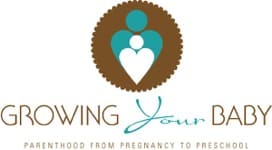Every day, we go through familiar routines without a second thought—using our favorite shampoo, applying lotion, or microwaving last night’s leftovers in a plastic container. But what if these simple habits could impact your baby before they’re even born?
That’s exactly what a new study by researchers at Emory University and Columbia University set out to explore. Their findings are eye-opening—and might make you take a closer look at what products you use while pregnant and beyond.
What Are Phthalates?
Phthalates are a group of man-made chemicals used since 1907. They help soften plastics and make scents, colors, and products last longer. You’ll find them in:
- Vinyl flooring
- Shampoos and soaps
- Lotions and perfumes
- Food packaging and takeout containers
- Detergents
- Baby care products
If you’re thinking, “Wait, those are things I use all the time,” you’re not alone. Nearly every person in the U.S. has detectable levels of phthalates in their body. That’s because phthalates are everywhere—and they’re hard to avoid.
Phthalates don’t just stay in the products. They leak into the air, our food, and even our skin. Once in the body, they break down quickly and are flushed out in urine—but not before interacting with our hormones.
Here’s where it gets concerning: phthalates are endocrine disruptors. That means they can interfere with how hormones work in the body. And hormones are a key part of how babies develop, especially during pregnancy.
Are BPA & Phthalates The Same?
No, BPA is not a phthalate — but they are often mentioned together because both are chemicals commonly found in plastics that can harm health.
Here’s the difference:
- BPA (bisphenol A) is used to make hard plastics and resins, like those in water bottles, food containers, and the lining of metal cans.
- Phthalates are a group of chemicals used to make plastics softer and more flexible, often found in items like vinyl flooring, shower curtains, and personal care products (like shampoos and lotions).
Both BPA and phthalates are considered endocrine disruptors, meaning they can interfere with the body’s hormones, but they are different types of chemicals and used for different purposes in manufacturing.
Researchers from Emory University and Columbia University set out to answer three key questions:
- Are pregnant women exposed to phthalates?
- Do these exposures alter a baby’s body chemistry (known as the metabolome)?
- Can those changes impact a newborn’s brain development?
To find out, they followed more than 200 pregnant African American women in Atlanta between 2016 and 2018. During early and mid-pregnancy, the team measured phthalate levels in the women’s urine to assess exposure. After birth, they analyzed small samples of the babies’ blood collected during routine heel pricks. They also evaluated the babies’ brain and behavioral development using a specialized developmental assessment scale.
What They Found:
High Phthalate Exposure Is Common—Especially Among Black Women
The study found that every single pregnant woman tested had measurable levels of phthalates in their body. Some of the phthalate levels were even higher than what’s typically seen in the general U.S. population. In particular, levels of a chemical called MEP—which is often found in scented personal care products—were noticeably higher. The women also had higher levels of MEHP, a breakdown product of phthalates used in plastics.
Researchers noted that Black women, in particular, tend to have higher phthalate exposures compared to white women. This difference isn’t random. It’s likely tied to environmental racism—things like fewer safer product options in Black communities, targeted marketing of heavily fragranced products, and less access to clean beauty alternatives.
In short, the women in the study were exposed to high levels of chemicals just by going about their daily lives—and this exposure was likely higher because of who they are and where they live.
Phthalates Change the Newborn’s Body Chemistry
When researchers analyzed blood samples from the newborns, they found thousands of chemical changes linked to the mothers’ phthalate levels during pregnancy.
Many of these changes happened in areas that are critical for a baby’s health, like:
- Fighting inflammation
- Processing vitamins (like vitamins B, E, and K)
- Managing stress at the cellular level (oxidative stress)
- Building fatty tissues that make up parts of the brain and nerves
- Regulating important hormones like thyroid hormones
Essentially, exposure to phthalates before birth disrupted the baby’s natural chemical balance, changing how their tiny bodies were preparing for life outside the womb.
Timing Matters: Early Pregnancy Is a More Sensitive Window
The researchers also noticed that phthalate exposure seemed to cause more significant changes when it happened early in pregnancy—between 8 and 14 weeks.
That’s a time when a baby’s major systems are forming: the brain, spinal cord, heart, eyes, and more. This suggests that early exposure might have a bigger impact on a baby’s long-term development compared to exposures later in pregnancy when the body is just fine-tuning what’s already built.
This finding shows how important it is to protect pregnant people from harmful exposures as early as possible—even before many know they’re pregnant.
Key Brain Chemicals Were Disrupted
One of the most worrying discoveries was that phthalates changed levels of key brain chemicals in the babies. These included:
- Tyrosine – important for making neurotransmitters like dopamine, which affects attention and mood.
- Tryptophan – needed to create serotonin, which helps regulate sleep, mood, and emotional responses.
- Serine and Phenylalanine – involved in building and maintaining a healthy brain.
- Thyroxine – a thyroid hormone critical for brain growth and development.
When levels of these chemicals were thrown off, newborns showed signs of lower attention and weaker arousal (how alert or responsive they are to their surroundings). These are early indicators that brain development could be impacted.
Put simply, the phthalates changed the way the babies’ brains were wiring themselves before they even opened their eyes to the world.
Long-Term Developmental Effects
While newborns can’t take standardized tests, the developmental scales used in this study showed that babies exposed to higher phthalate levels had more difficulty paying attention and responding appropriately to stimulation.
Since attention and arousal are critical early skills that lead to language development, social skills, and learning, the researchers believe these chemical exposures could have long-term consequences for children’s cognitive development and mental health.
Although the study looked at babies in the first days after birth, the types of disruptions they saw raise big questions about future risks for ADHD, anxiety, learning disabilities, and other challenges.
In simple terms: the chemicals in your body during pregnancy could shape how your baby reacts to the world around them.
Why It Matters for Black Families
This study focused on African American mothers in Atlanta—a group that research shows is more likely to face higher environmental exposures and less access to clean products.
Black mothers already face higher risks for complications during pregnancy and childbirth. Add in harmful environmental exposures, and the deck is stacked even higher against them and their children.
We need better protections, better labeling, and more access to safer products for everyone—but especially for communities that face disproportionate risks.
Real-Life Implications for Parents and Parents-To-Be
We know you can’t avoid every chemical—but knowledge is power. Here’s what you can do right now to reduce your exposure:
- Check product labels – Look for terms like “phthalate-free” on shampoos, lotions, and perfumes.
- Skip fragrance when you can – “Fragrance” on a label can mean a mix of chemicals—some of which are phthalates.
- Use glass or stainless steel for food storage – Heating food in plastic can release phthalates into your food.
- Ventilate your home – Phthalates can collect in dust. Open windows regularly and vacuum with a HEPA filter.
- Be choosy with baby products – Avoid products with synthetic fragrance and PVC plastics.
- Support clean beauty and personal care brands – Many now cater to diverse hair and skin types without using phthalates.
What Needs to Change?
This study adds to growing evidence that the U.S. needs stronger regulation of phthalates. Unlike the EU, which has banned or restricted many of these chemicals, the U.S. still allows them in everyday products.
The study also raises a bigger question: Why are pregnant people—especially Black women—being exposed to so many untested and potentially harmful chemicals?
The authors call for:
- Better regulation
- Public education campaigns
- More research into how phthalates affect babies long-term
- Environmental justice policies that protect vulnerable communities
You shouldn’t need a PhD to keep your baby safe from toxic chemicals. But right now, pregnant people are shouldering that responsibility without enough support or information.
We need better transparency, stronger protections, and a bigger conversation about the invisible chemicals surrounding us every day. Our children—and their developing brains—are depending on it.
Related Articles:








